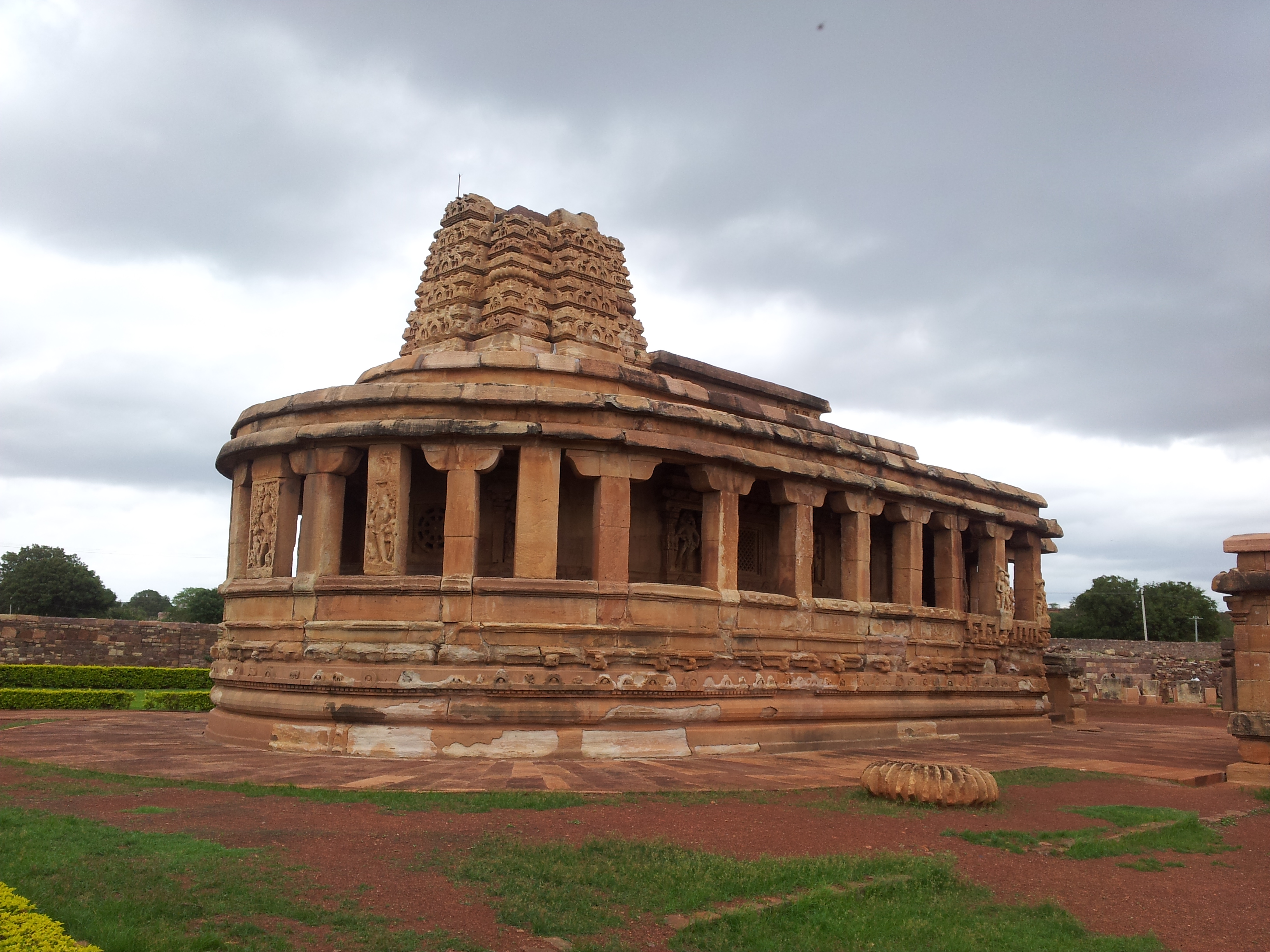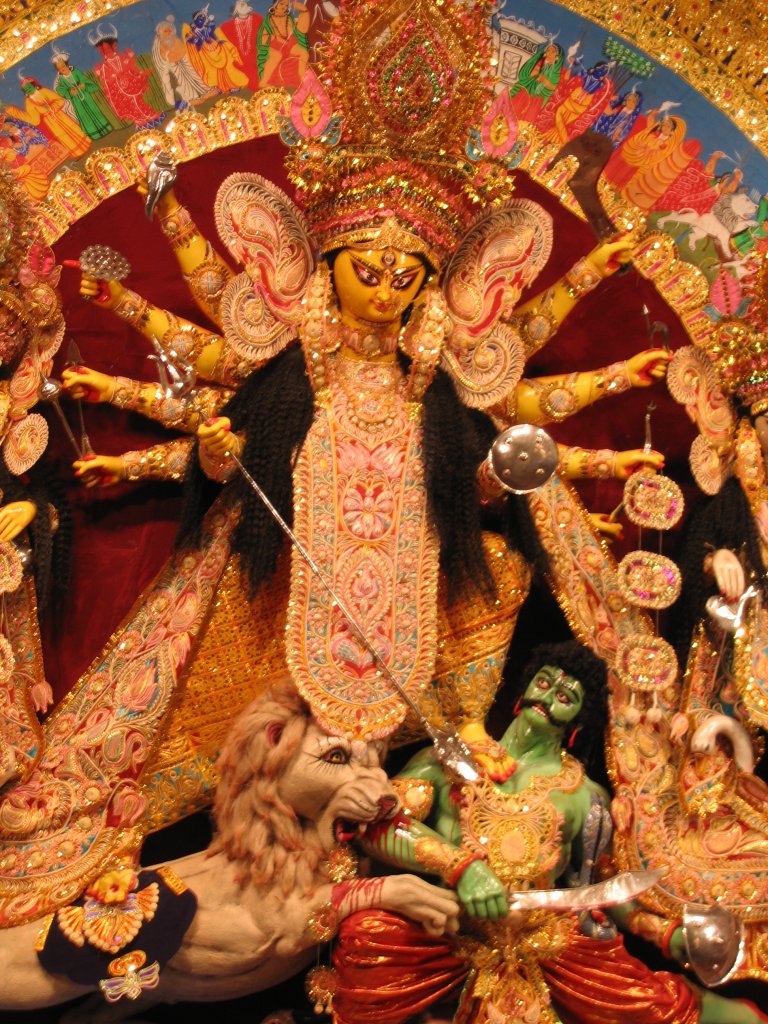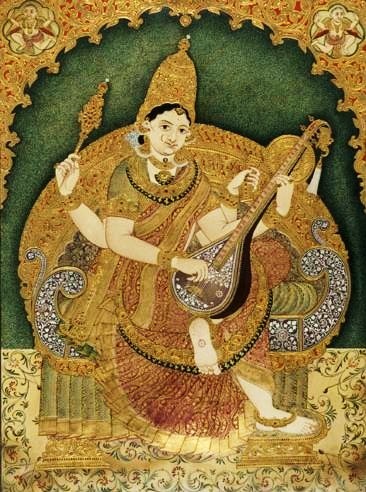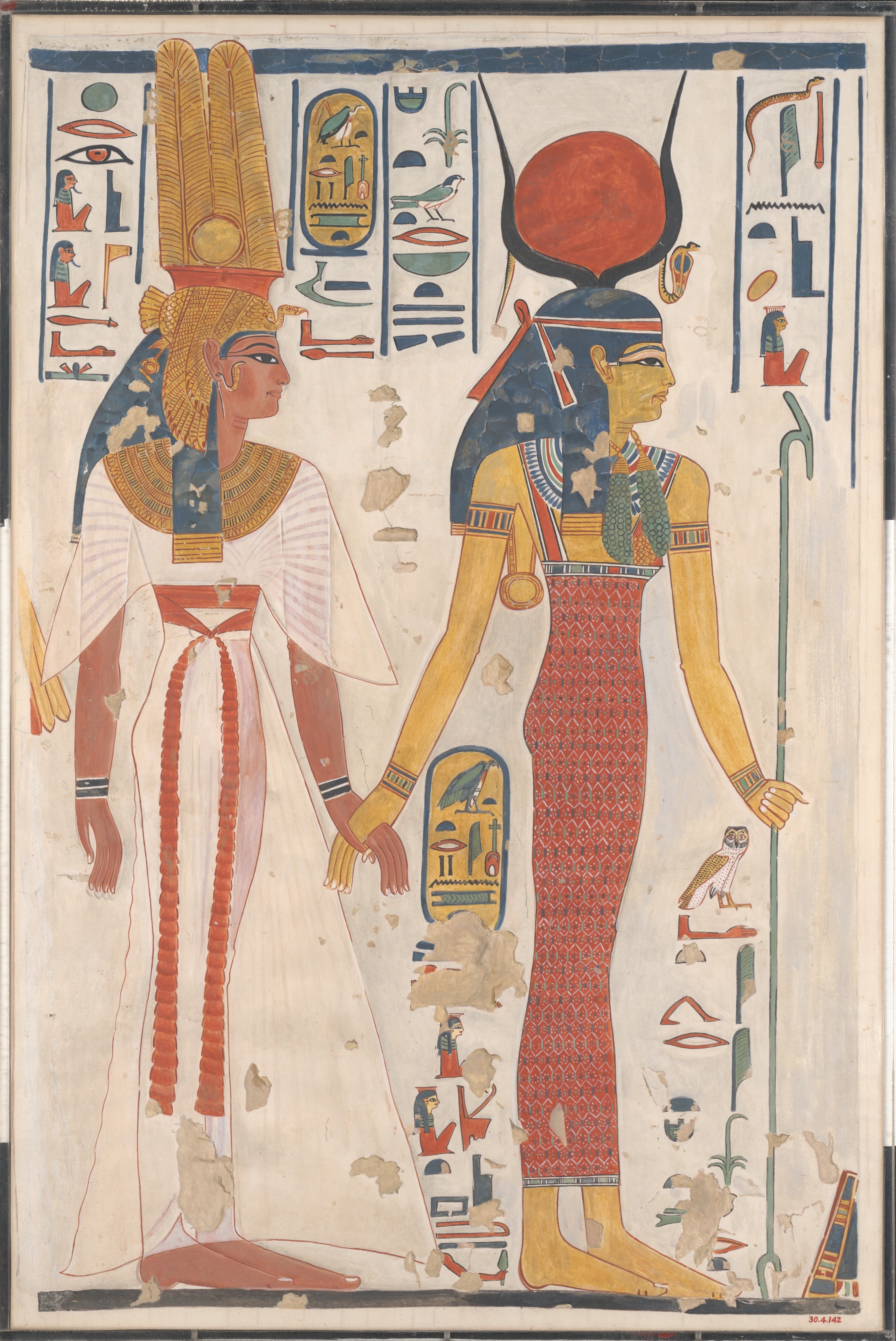|
Devi
''Devī'' (; ) is the Sanskrit word for 'goddess'; the masculine form is Deva (Hinduism), ''deva''. ''Devi'' and ''deva'' mean 'heavenly, divine, anything of excellence', and are also gender-specific terms for a deity in Hinduism. The concept and reverence for goddesses appears in the Vedas, which were composed around the 2nd millennium BCE. However, they did not play a vital role in that era. Goddesses such as Durga, Kali, Lakshmi, Parvati, Radha, Saraswati and Sita have continued to be revered in the modern era. The medieval era Puranas witness a major expansion in mythology and literature associated with Devi, with texts such as the ''Devi Mahatmya'', wherein she manifests as the ultimate truth and supreme power. She has inspired the Shaktism tradition of Hinduism. Further, Devi is viewed as central in the Hindu traditions of Shaktism and Shaivism. Etymology ''Devi'' and ''deva'' are Sanskrit terms found in Vedic literature around the 3rd millennium BCE. ''Deva'' is masculi ... [...More Info...] [...Related Items...] OR: [Wikipedia] [Google] [Baidu] |
Devi Mahatmya
The ''Devi Mahatmya'' or ''Devi Mahatmyam'' () is a Hindu philosophical text describing the Goddess, known as Mahadevi, Adi Parashakti or Durga, as the supreme divine parabrahma, ultimate reality and creator of the universe. It is part of the Markandeya Purana, Mārkandeya Purāna (chapters 81 to 93). ''Devi Mahatmyam'' is also known as the ''Durgā Saptashatī'' () or Śata Chandī (शत् चंडी) and ''Chandi Path'' (). The text contains 700 verses arranged into 13 chapters. It is one of the most important texts in Shaktism, along with ''Devi-Bhagavata Purana'' and Devi Upanishad. The text is one of the earliest extant complete manuscripts from the Hindu traditions which describes reverence and worship of the feminine aspect of God. The ''Devi Mahatmyam'' describes a storied battle between good and evil, where the Devi manifesting as goddess Durga leads the forces of good against the demon Mahishasura—the goddess is very angry and ruthless, and the forces of goo ... [...More Info...] [...Related Items...] OR: [Wikipedia] [Google] [Baidu] |
Shaktism
Shaktism () is a major Hindu denomination in which the God in Hinduism, deity or metaphysics, metaphysical reality is considered metaphorically to be a woman. Shaktism involves a galaxy of goddesses, all regarded as different aspects, manifestations, or personifications of the divine feminine energy called ''Shakti''. It includes various modes of worship, ranging from those focused on the most worshipped Durga, to gracious Parvati, and the fierce Kali. After the decline of Buddhism in India, various Hindu and Buddhist goddesses were combined to form the Mahavidya, a Pantheon (religion), pantheon of ten goddesses. The most common forms of the Mahadevi worshipped in Shaktism include: Durga, Kali, Saraswati, Lakshmi, Parvati, and Tripura Sundari. Also worshipped are the various Gramadevatas across the Indian villages. Shaktism also encompasses various Tantra#Śaiva and Śākta tantra, tantric sub-traditions, including Vidyapitha and Kulamārga. Shaktism emphasizes that intense ... [...More Info...] [...Related Items...] OR: [Wikipedia] [Google] [Baidu] |
Durga
Durga (, ) is a major Hindu goddess, worshipped as a principal aspect of the mother goddess Mahadevi. She is associated with protection, strength, motherhood, destruction, and wars. Durga's legend centres around combating evils and demonic forces that threaten peace, prosperity, and dharma, representing the power of good over evil. Durga is believed to unleash her divine wrath against the wicked for the liberation of the oppressed, and entails destruction to empower creation. Durga is seen as a motherly figure and often depicted as a beautiful woman, riding a lion or tiger, with many arms each carrying a weapon and often defeating demons. She is widely worshipped by the followers of the goddess-centric sect, Shaktism, and has importance in other denominations like Shaivism and Vaishnavism. The most important texts of Shaktism, Devi Mahatmya and Devi Bhagavata Purana, revere Devi (the Goddess) as the primordial creator of the universe and the Brahman (ultimate truth and reali ... [...More Info...] [...Related Items...] OR: [Wikipedia] [Google] [Baidu] |
Saraswati
Saraswati (, ), also spelled as Sarasvati, is one of the principal Devi, goddesses in Hinduism, revered as the goddess of knowledge, education, learning, arts, speech, poetry, music, purification, language and culture. Together with the goddesses Lakshmi and Parvati, she forms the trinity of chief goddesses, known as the Tridevi. Sarasvati is a pan-Indian deity, venerated not only in Hinduism but also in Jainism and Buddhism.Ludvik (2007), pp. 1, 11. She is one of the prominent goddesses in the Historical Vedic religion, Vedic tradition (1500 to 500 BCE) who retains her significance in later Hinduism. In the Vedas, her characteristics and attributes are closely connected with the Sarasvati River, making her one of the earliest examples of a Rivers in Hinduism, river goddess in Indian tradition. As a deity associated with a river, Sarasvati is revered for her dual abilities to purify and to nurture fertility. In later Vedic literature, particularly the Brahmanas, Sarasvati is i ... [...More Info...] [...Related Items...] OR: [Wikipedia] [Google] [Baidu] |
Puranas
Puranas (Merriam-Webster's Encyclopedia of Literature (1995 Edition), Article on "Puranas", , page 915) are a vast genre of Indian literature that include a wide range of topics, especially legends and other traditional lore. The Puranas are known for the intricate layers of symbolism depicted within their stories. Composed originally in Sanskrit and in Languages of India, other Indian languages,John Cort (1993), "An Overview of the Jaina Puranas" in ''Purana Perennis: Reciprocity and Transformation in Hindu and Jaina Texts,'' (Editor: Wendy Doniger), State University of New York Press, , pages 185-204 several of these texts are named after major Hindu deities such as Vishnu, Shiva, Brahma, and Mahadevi, Devi. The Puranic genre of literat ... [...More Info...] [...Related Items...] OR: [Wikipedia] [Google] [Baidu] |
Lakshmi
Lakshmi (; , , sometimes spelled Laxmi, ), also known as Shri (, , ), is one of the principal goddesses in Hinduism, revered as the goddess of wealth, fortune, prosperity, beauty, fertility, sovereignty, and abundance. She along with Parvati and Sarasvati, form the trinity of goddesses called the Tridevi. Lakshmi has been a central figure in Hindu tradition since pre-Buddhist times (1500 to 500 BCE) and remains one of the most widely worshipped goddesses in the Hindu pantheon. Although she does not appear in the earliest Vedic literature, the personification of the term '' shri''—auspiciousness, glory, and high rank, often associated with kingship—eventually led to the development of Sri-Lakshmi as a goddess in later Vedic texts, particularly the ''Shri Suktam''. Her importance grew significantly during the late epic period (around 400 CE), when she became particularly associated with the preserver god Vishnu as his consort. In this role, Lakshmi is seen as the ide ... [...More Info...] [...Related Items...] OR: [Wikipedia] [Google] [Baidu] |
Parvati
Parvati (, , IPA: /Sanskrit phonology, pɑɾʋət̪iː/), also known as Uma (, , IPA: Sanskrit phonology, /ʊmɑː/) and Gauri (, , IPA: /Sanskrit phonology, gə͡ʊɾiː/), is one of the principal goddesses in Hinduism, revered as the Devi, goddess of power, energy, nourishment, harmony, love, beauty, devotion, and motherhood. Along with Lakshmi and Saraswati, Sarasvati, she forms the trinity, known as the Tridevi. From her first appearance as a goddess during the Itihasa-Purana, epic period (400 BCE – 400 CE), Parvati is primarily depicted as the consort of the god Shiva. According to various Puranas, Parvati is the reincarnation of Sati (Hindu goddess), Sati, Shiva's first wife, who relinquished her body to sever familial ties with her father, Daksha, after he had insulted Shiva. Parvati is often equated with the other goddesses such as Sati, Uma, Kali and Durga and due to this close connection, they are often treated as one and the same, with their stories frequently ove ... [...More Info...] [...Related Items...] OR: [Wikipedia] [Google] [Baidu] |
Kali
Kali (; , ), also called Kalika, is a major goddess in Hinduism, primarily associated with time, death and destruction. Kali is also connected with transcendental knowledge and is the first of the ten Mahavidyas, a group of goddesses who provide liberating knowledge. Of the numerous Hindu goddesses, Kali is held as the most famous. She is the preeminent deity in the Hindu tantric and the Kalikula worship traditions, and is a central figure in the goddess-centric sects of Hinduism as well as in Shaivism. Kali is chiefly worshipped as the Divine Mother, Mother of the Universe, and Divine feminine energy. The origins of Kali can be traced to the pre-Vedic and Vedic era goddess worship traditions in the Indian subcontinent. Etymologically, the term ''Kali'' refers to one who governs time or is black. The first major appearance of Kali in the Sanskrit literature was in the sixth-century CE text '' Devi Mahatmya''. Kali appears in many stories, with the most popular one bein ... [...More Info...] [...Related Items...] OR: [Wikipedia] [Google] [Baidu] |
Deva (Hinduism)
''Deva'' (, ) means 'shiny', 'exalted', 'heavenly being', 'divine being', 'anything of excellence', and is also one of the Sanskrit terms used to indicate a deity in Hinduism.Monier Monier-Williams, A Sanskrit-English Dictionary” Etymologically and Philologically Arranged to cognate Indo-European Languages, Motilal Banarsidass, page 492 ''Deva'' is a masculine term; the feminine equivalent is ''Devi (Hinduism), Devi''. The word is a cognate with Latin ''deus'' ('god') and Greek Zeus. In the earliest Vedic literature, all supernatural beings are called ''Devas''George Williams (2008), A Handbook of Hindu Mythology, Oxford University Press, , pages 90, 112 and ''Asuras''. The concepts and legends evolved in Indian literature#In archaic Indian languages, ancient Indian literature, and by the late Vedic period, benevolent supernatural beings are referred to as ''Deva-Asuras''. In post-Vedic Hindu texts, such as the Puranas and the Itihasas of Hinduism, the ''Devas'' represent the g ... [...More Info...] [...Related Items...] OR: [Wikipedia] [Google] [Baidu] |
Sita
Sita (; ), also known as Siya, Jānaki and Maithili, is a Hindu goddess and the female protagonist of the Hindu epic ''Ramayana''. Sita is the consort of Rama, the avatar of god Vishnu, and is regarded as an avatar of goddess Lakshmi. She is the chief goddess of the Ramanandi Sampradaya and is the goddess of beauty and devotion. Sita's birthday is celebrated every year on the occasion of Sita Navami. Described as the daughter of Bhūmi (the earth), Sita is brought up as the adopted daughter of King Janaka of Videha. Sita, in her youth, chooses Rama, the prince of Ayodhya (Ramayana), Ayodhya as her husband in a swayamvara. After the Sita Swayamvara, swayamvara, she accompanies her husband to his kingdom but later chooses to accompany him along with her brother-in-law Lakshmana, in his exile. While in exile, the trio settles in the Dandaka forest from where she is abducted by Ravana, the Rakshasa king of Lanka. She is imprisoned in the garden of Ashoka Vatika, in Lanka, until she ... [...More Info...] [...Related Items...] OR: [Wikipedia] [Google] [Baidu] |
Goddess
A goddess is a female deity. In some faiths, a sacred female figure holds a central place in religious prayer and worship. For example, Shaktism (one of the three major Hinduism, Hindu sects), holds that the ultimate deity, the source of all reality, is Mahadevi (Supreme Goddess) and in some forms of Tantric Shaivism, the pair of Shiva and Shakti are the ultimate principle (with the goddess representing the active, creative power of God). Meanwhile, in Vajrayana, Vajrayana Buddhism, ultimate reality is often seen as being composed of two principles depicted as two deities in union (Yab-Yum, yab yum, "father-mother") symbolising the non-duality of the two principles of perfect wisdom (female) and skillful compassion (male). A single figure in a monotheistic faith that is female may be identified simply as god because of no need to differentiate by gender or with a diminutive. An experiment to determine the effect of psychedelics on subjects composed of leaders from diverse religio ... [...More Info...] [...Related Items...] OR: [Wikipedia] [Google] [Baidu] |
Shaivism
Shaivism (, , ) is one of the major Hindu denominations, Hindu traditions, which worships Shiva as the Para Brahman, supreme being. It is the Hinduism#Demographics, second-largest Hindu sect after Vaishnavism, constituting about 385 million Hindus, found widely across South Asia (predominantly in South India, Southern India), Sri Lanka, and Nepal.Keay, p.xxvii. The followers of Shaivism are called Shaivas or Shaivites. According to Chakravarti, Shaivism developed as an amalgam of pre-Aryan religions and traditions, Vedic Rudra, and post-Vedic traditions, accommodating local traditions and Yoga, puja and bhakti. According to Bisschop, early shaivism is rooted in the worship of vedic deity Rudra. The earliest evidence for sectarian Rudra-Shiva worship appears with the Pasupata (early CE), possibly owing to the Origins of Hinduism, Hindu synthesis, when many local traditions were aligned with the Brahmanism, Vedic-Brahmanical fold. The Pāśupata movement rapidly expanded through ... [...More Info...] [...Related Items...] OR: [Wikipedia] [Google] [Baidu] |












